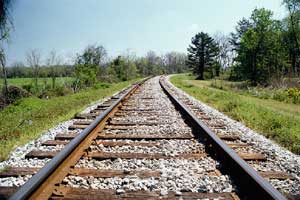Morgan Hill is set to receive more than $2 million from the federal government to help with local projects that are intended to improve transportation efficiency and safety in the coming years.
The money is part of a $50 million package of federal funds for various projects in the 18th Congressional District, Representative Zoe Lofgren announced this week. The funding will go toward a variety of initiatives, including housing for farmworkers and veterans, public safety and youth services.
In Morgan Hill, the newly earmarked federal funds will go toward transportation projects that have been long in the works. Specifically, an allocation of $1 million will go toward the design of intersection grade separations for the California High-Speed Rail system in Morgan Hill; $500,000 for the expansion of U.S. 101 through the city’s boundaries; and $500,000 for the design and construction of railroad “quiet zones” in Morgan Hill.
“I am so pleased that the House-passed government funding legislation included funding for projects that will help farmworkers, homeless veterans, underserved communities, and all working families in the 18th District,” Lofgren said in the announcement. “I thank all the local leaders and organizations that provided requests for my consideration that could make a difference in our area. Moving forward, I will continue to fight for our district to ensure that we get the federal funding we need to make necessary community improvements.”
Morgan Hill City Manager Christina Turner said even though the newly announced federal earmarks do not fully fund the listed projects, the city is grateful for the funding.
“While the city needs to take various steps to secure the funding, and while the funding allocations do not fully fund the projects, the City of Morgan Hill is grateful for Congresswoman Lofgren’s advocating and securing the initial funding that will allow us to begin the long process of implementing these significant public works and infrastructure improvements,” Turner said.
Assistant City Manager Edith Ramirez added, “We still need to figure out what exactly we can accomplish with partial funding.”
City staff, in a press release, referred to the funds as “seed money” for the three announced projects.
Even though city officials have opposed the HSR alignment chosen to cut through the center of Morgan Hill, the city still needs to make “contingency plans” for when and if the state is ready to bring the bullet train project through the area, city staff said.
The design of future grade separations at existing major local intersections would be used to “advocate and plan for High-Speed Rail crossings that would otherwise come through city roadways at the street level,” says the city’s press release.
Ramirez added that starting early on the design of grade separations for HSR could put Morgan Hill in a good position for even more funding for future transportation projects. She added that such planning would also give the city a head start on ensuring police, fire and ambulances have efficient routes across town when and if the HSR is built.
The $500,000 earmarked for Highway 101 expansion in Morgan Hill will go toward the ongoing planning work for a future expansion of the freeway from Cochrane Road south. That expansion will require vastly more funding, but this year’s federal earmark will help the city and the Valley Transportation Authority proceed with project planning tasks and “ensure the project begins moving forward from a planning and environmental perspective,” says the city’s press release.
For the planning of railroad quiet zones in Morgan Hill, the city asked for $4.5 million from the federal government, but received $500,000, Ramirez said. This money will allow the city to continue the process of how to plan and establish quiet zones along the Union Pacific Railroad tracks in Morgan Hill.
Quiet zones, in the railroad industry, are sections of active tracks where trains cannot sound their horns. Cities or counties that want to establish quiet zones are required to implement other measures to mitigate the potential risk resulting from the absence of a train horn, according to the Federal Railroad Administration.
“Initially, funding will be used to begin design and permit work that will allow the city to implement quiet zones within Morgan Hill,” says the city’s press release.
Money for safer streets
In a separate announcement, Lofgren’s office said Morgan Hill is one of two cities in her district to receive funding from the U.S. Department of Transportation’s Safe Streets for All program.
Specifically, Morgan Hill will receive $200,050 to develop a “comprehensive safety action plan,” said the announcement from Lofgren.
Morgan Hill Public Works Director Chris Ghione said the funds will help the city in fine tuning some details for roadway safety improvement in its Transportation Master Plan. That plan is currently in the process of being drafted, with an update to the city council scheduled for May 15.
The DOT’s Safe Streets for All program provides funding to local jurisdictions “to prevent roadway deaths and serious injuries” through infrastructure upgrades and improvements, says the DOT website.








